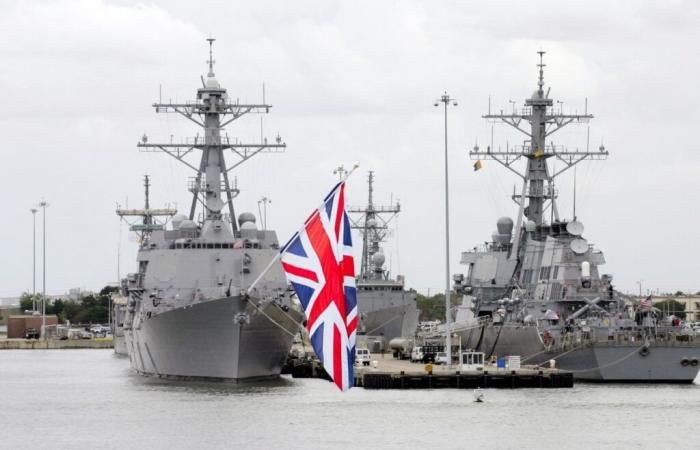
The Royal Navy and the British armed forces are struggling to maintain their rank.
The Royal Navy, once the largest maritime force in the world (by far), is going through a deep crisissymbolized by the growing incapacity of its forces to fulfill their missions. This decline, linked to chronic underinvestment and structural problems, affects not only the navy, but also the entire British armed forces.
Read also:
Aged submarine deployed on crucial missions as symbol of British decay
The iconic HMS Triumph, the latest Trafalgar-class submarine, embodies the Royal Navy's current challenges. Built 33 years ago, it was planned for a mission in the Eastern Mediterranean, but had to turn back due to technical problems. This situation illustrates the consequences of decades of underinvestment in infrastructure and the operational maintenance of ships.
France increases the United Kingdom's dependence on it for its electricity which is too subject to the imponderables of offshore wind turbines
The hope of the AUKUS pact
Nick Childs, a researcher at the IISS think tank, points out that improvements are being made, notably through the AUKUS agreement, which sees the UK, US and Australia working together to build submarines Australian nuclear power plants. Ultimately, this agreement could modernize the Royal Navy's infrastructure. However, in the meantime, current flaws seriously affect the availability of nuclear attack submarines (ANS) and complicate critical missions such as hunting Russian submersibles in transatlantic waters.
A nuclear deterrent undermined
The United Kingdom has four ballistic missile submarines (SSBNs), carrying Trident II D5 missiles equipped with nuclear warheads. At all times, at least one of these submarines must remain at sea, invisible and ready to respond to a nuclear threat. However, the priority renovations of these SSBNs have considerably lengthened their missions, reaching records such as that of HMS Vengeance, which remained at sea for 201 days. This situation reduces the ability of the British Navy to guarantee nuclear deterrence. With an aging fleet and poorly defined maintenance priorities, the Royal Navy is struggling to maintain its strategic position in the face of an increasingly active Russia in European seas.
A growing gap with the French Navy
The gap between the Royal Navy and the French Navy is becoming more and more visible. While the United Kingdom has more frigates (15 compared to 10), only 33% of these are operational, compared to 75 to 80% for France, as Admiral Nicolas Vaujour recently highlighted before the Commission of defense of the National Assembly.
Two-speed availability
These operational problems also affect British submarines, where France stands out for better management of its infrastructure and personnel. This operational decline affects the UK's ability to maintain its historic position as a dominant maritime power.
Failures that affect the entire army
The Royal Navy is not alone in suffering. The Royal Air Force and the British Army face the same challenges, with reduced numbers and inferior equipment to their French equivalents. However, the British defense budget is significantly higher than that of France (74 billion euros compared to 64 billion).
Management criticized
Tom Sharpe, a former Royal Navy officer, laments that the influence of defense industrialists on public policy pushes the United Kingdom to spend more for less results, leaving France surpassing its neighbor across the Channel in almost all military areas.
Germany attacks French naval hegemony in Europe with €3.3 billion program for 3 high-tech intelligence ships
This article examines the major challenges facing British defense, particularly the Royal Navy, which is facing availability problems with its ships and submarines. Between a weakened nuclear deterrent and a growing gap with the French Navy, the United Kingdom is struggling to maintain its military rank despite a substantial defense budget. The AUKUS agreement and other initiatives offer hopes of recovery, but current weaknesses highlight poor management of strategic and operational priorities.
Visual created using Canva for representation purposes.
Post Views: 31
As a young independent media, secret-defense.org needs your help. Support us by following and bookmarking us on Google News. THANKS !
Follow us on Google News





